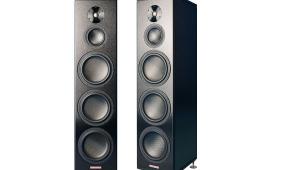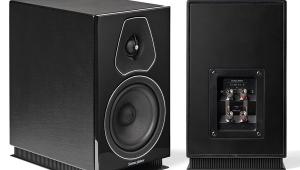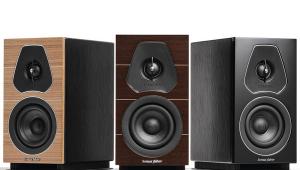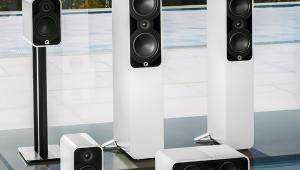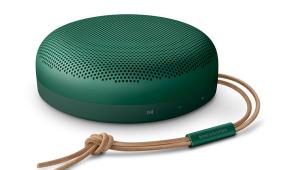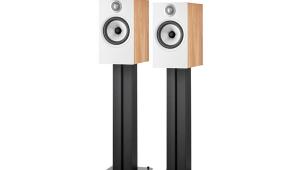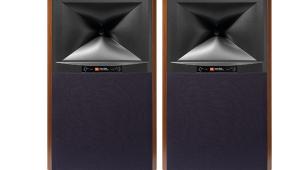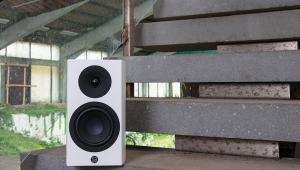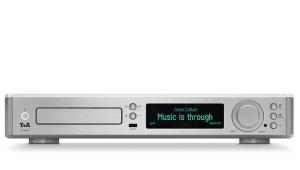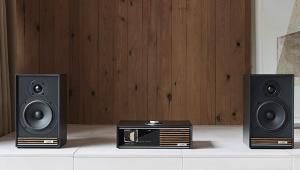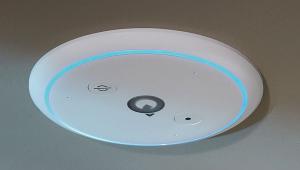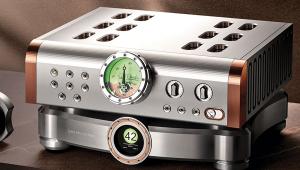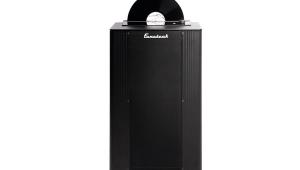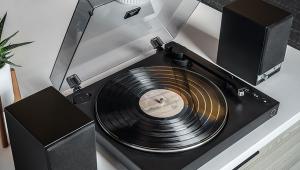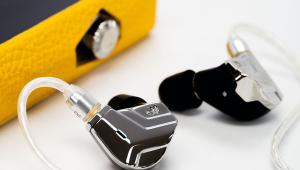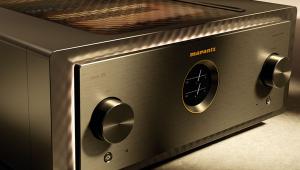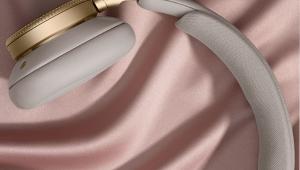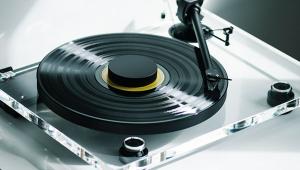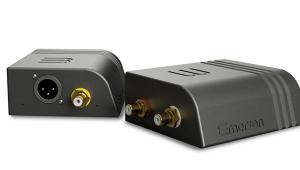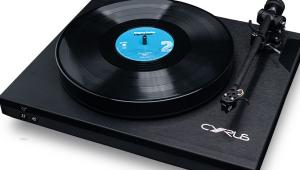Dynaudio XEO 6 - £2,925
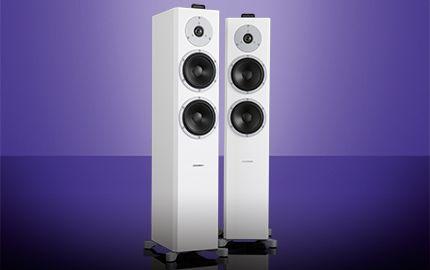
Proper hi-fi means piles of separates and reams of cables, right? Not so according to Dynaudio, which introduces a wealth of updates to its active Xeo range to push them further into steadfast audiophile territory. Many audiophiles believe that active speakers offer obvious benefits over passive designs, evidenced by the likes of Linn and ATC as two high-end brands offering active models with equally high-end price tags. Why? Because as well as freeing up some hi-fi rack space, placing a tailor-made amplifier inside a speaker’s cabinet takes the trial and error of amp and speaker matching out of the equation, meaning the sound you get is closer to what the manufacturer had in mind.
The Xeo 6 replaces the outgoing Xeo 5 (HFC 376), bringing with it a bunch of new features and improved tech that’s packed into a more compact cabinet. Along with an updated remote control, there’s a simple control panel on each speaker’s top surface, for adjusting volume and switching input. And because the speakers sync to each other on power up, adjusting either one via their top panel tells the other to follow suit.
As per the previous range, every Xeo speaker can be individually assigned to left/right/mono duties via rear panel switches, to identify them within two-channel and larger surround sound setups. You can also allocate them within a ‘zone’ to cater for multi-room Xeo systems. To further aid placement, there are also room position EQ settings, thanks to more rear panel switches for adjusting bass response for near wall, corner or neutral placement.
Time for a change
While the Xeo 6 uses the same driver complement as the 5 model it replaces – comprised of two 5in long-throw MSP (magnesium silicate polymer) mid/bass woofers and a 27mm soft dome tweeter – inside the cabinets there are updates aplenty. The original Texas Instruments amp modules have been replaced with newer variants and the Xeo 6 now gets three 50W digital amplifier modules instead of the two in the 5, making it a fully tri-amped design and upping its overall power output to 150W per speaker.
The folks at Dynaudio haven’t just been busy tinkering with the speaker end of the Xeo package, as the 6 also gets an improved version of the Xeo’s transmitter hub, which is a dinky little box that can be plugged into a range of analogue and digital sources for sending wireless music signals to its accompanying speakers. As well as now offering an Ethernet port that hints at future functionality and a coaxial S/PDIF input alongside its optical and USB sockets, this new hub is also more accommodating for higher-res content. While the last hub was limited to 24-bit/48kHz, this new version welcomes signals up to 24/96 across its digital inputs, which are then downsampled to 16/48 before being beamed into the speakers.
The Xeo Hub comes with its own wall-wart PSU and you can also power it via USB while playing music from a laptop for example, making it a highly discreet and portable music provider. Thanks to its analogue RCAs you can even stream a line-level signal from a turntable over wi-fi.
Externally these new Xeos also benefit from recent revisions to Dynaudio’s passive Excite range, including magnetically attached full-length grilles that do away with old-fashioned recessed lugs in the front baffle, making for a sleeker finish. They also get the Excite range’s excellently engineered cast alloy outrigger feet, which aid stability by broadening the speaker’s footprint and offer floor coupling via rubber feet, which house hidden spikes that can be wound into action from above.
With such a plethora of settings, you might expect that getting the Xeos moving some air will involve a fair amount of chin scratching and software configuring, but the truth is it isn’t any more taxing than hooking up a pair of passive speakers to your average amp. Simply connect each speaker to the mains, set their rear panel switches to your preferences and switch them on. Once powered up, the hub locks its signal onto the speakers, so all that’s left to do is plug the hub into your chosen source and, as the saying goes, Bob’s your mother’s brother.
Sound quality
Dynaudio seems to have engineered these speakers to not let their demure proportions stop them from getting the most out of the music. Kicking off the listening experience with the Xeos switched to the neutral EQ setting, with their back panels 55cm from my room’s boundary wall and firing down my listening room with just a few degrees of toe-in, I’m surprised by just how much welly they have. A 16-bit/44kHz FLAC rip of The Stone Roses’ Breaking Into Heaven sees them lay forth an encompassing soundstage, that’s solidly woven together. John Squire’s multi-layered lead guitar work is densely rendered with his Gibson’s riffs sounding expansive and full of body.
With such a packed wall of sound, this track can catch many an unprepared or well executed speaker out, leaving it all in a muddle while attempting to pull apart everything that’s going on in the soundstage. Thankfully the Dyns handle the mix admirably, and take it all in their stride with a cool head. Cymbals are articulated with a clear openness that allows their shimmering tones to remain gentle, without being overwhelmed by Squire’s six-string onslaughts coming at you from all angles, or pushed to the sidelines by Mani’s energetic bass lines, which also gets plenty of airspace.
Feeding the Hub with a 24/96 FLAC rip of Neil Cowley Trio’s Couch Slouch reveals that the cut of Xeo’s jib is the polar opposite of the track title’s sentiment. Each instrument sounds highly animated as the speakers strut their funky stuff and you have a real sense of the three musicians being completely in tune with one another, feeding off each other and taking the listener with them. What this highlights is how well the Xeos time across the frequency band, especially with notes’ leading edges which are rapidly rendered. You get the impression that each speaker’s drive units are working together in a seamless and cohesive manner, and this really helps to make instruments sound whole and fully formed. Looking back through my notes on their predecessors, I’d say this newer model has greater grip on the music, especially across the bass and midrange. Whether this is due to their extra amplification or improvements to their DSP I cannot say, but what I do know is that instrument separation across the frequency band seems to have improved over the previous model, and with a smoother transition to the tweeter’s cross-over point.
Bass also seems to be delivered with more control than the previous Xeo incarnation could muster, and despite the smaller cabinet size, there also seems to be more of it. With a 16/44 ALAC rip of Ron Sexsmith’s Late Bloomer, the Xeos ensure bass notes have enough presence to underpin the music with plenty of punch and detail. With this track you also get the sense that Dynaudio has paid close attention to how the bass is projected at the listener, to prevent the lower frequencies from ambling around at the back of the soundstage. Instead the speakers ensure the bass can envelop the soundstage, reaching the listener in a focussed manner without sounding too forward.
When presented with the more meaty bass wallop of Goldfrapp’s Clay, the Xeos dig deep into the lower frequencies, where they lend plenty of low down power without letting the bass becoming too flabby sounding. Comparing the Xeos with some of the best passive floorstanders at this price, including those from Dynaudio’s own stable, shows that while they can’t ultimately achieve the same levels of sheer grunt, the bass they muster is delivered with a sense of authority.
Experimenting with the EQ settings reveals how this feature can be brought into play for real-world listening conditions. The wall setting comes into consideration at distances less than 12cm, giving a similar audible effect to Dynaudio’s bass port bungs, by helping to cull unnatural reverberation creeping into the lower levels. The corner setting rolls off too early for my room, although it may prove useful for those with small listening rooms or where nearby furniture compromises placement.
Finally, despite the improved interface and subtle LED volume level display on each speaker, I’d still welcome slighter steps within the graduated volume levels for greater degrees of fine tuning, to help get it just right for every scenario.
Conclusion
With a wealth of new real-world features, including better user controls and inputs for music up to 96kHz combined with improved amplification, Dynaudio has clearly done its homework to shake off the lifestyle tag and make these speakers even more of a serious audiophile proposition. Their stronger bass response aligned to pinpoint sharp timing and a more powerful soundstage combine to bring whatever music is thrown at them to life. Thankfully Dynaudio’s characteristically smooth and well controlled sound also comes as part of the package, making them an ideal proposition for music lovers who want serious hi-fi sounds from minimal components.
LIKE: Ease of use; controls; balanced and powerful sound
DISLIKE: Volume needs better stepping; Hi-res 24/96 streamed at 16/48
WE SAY: Well thought out updates and better sound improves on the original Xeo package
DETAILS
PRODUCT Dynaudio Xeo 6
ORIGIN: Denmark
TYPE: Active floorstanding loudspeaker
WEIGHT: 14.7kg
DIMENSIONS: (WxHxD) 170 x 854 x 246mm
FEATURES:
• 3x 50W digital amps per speaker
• 1in tweeter
• 2x 5in mid/bass drivers
• Portable wi-fi receiver with analogue and digital inputs
• Room position EQ settings
DISTRIBUTOR: Dynaudio UK
TELEPHONE: 01353 721089
WEBSITE dynaudio.com
 |
Inside this month's issue:
Pro-Ject Debut EVO 2 turntable, Advance Paris sub-£500 X-i50 BT integrated amp, DALI's stunning Rubikore standmount loudspeakers, Triangle Capella wireless active speakers, EAT's Fortissimo turntable with F-Note tonearm, our headphone Group Test and much, much more... |

